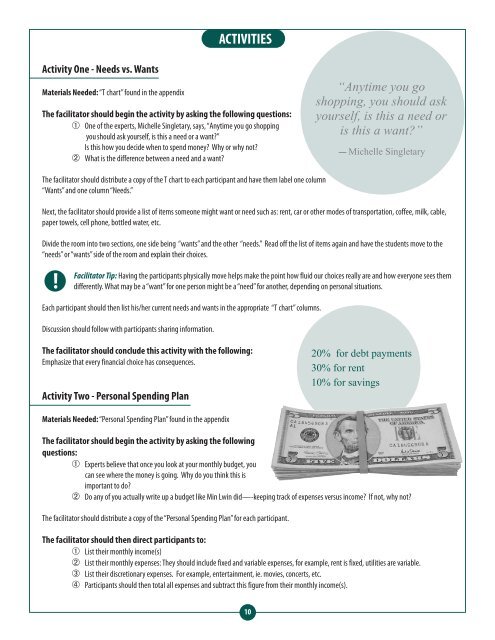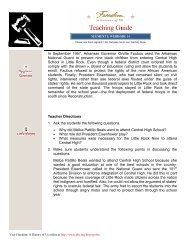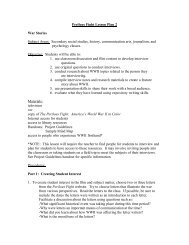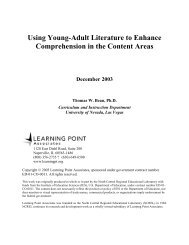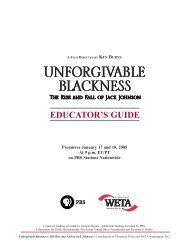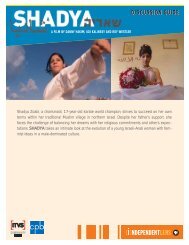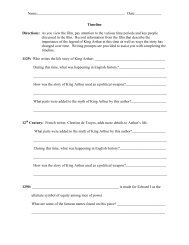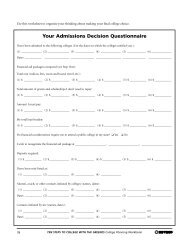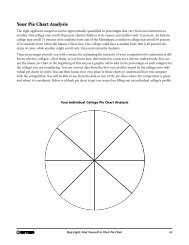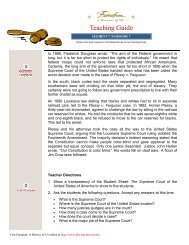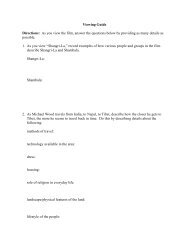Facilitator's Guide - PBS
Facilitator's Guide - PBS
Facilitator's Guide - PBS
You also want an ePaper? Increase the reach of your titles
YUMPU automatically turns print PDFs into web optimized ePapers that Google loves.
ACTIVITIES<br />
Activity One - Needs vs. Wants<br />
Materials Needed: “T chart” found in the appendix<br />
The facilitator should begin the activity by asking the following questions:<br />
a One of the experts, Michelle Singletary, says, “Anytime you go shopping<br />
you should ask yourself, is this a need or a want?”<br />
Is this how you decide when to spend money? Why or why not?<br />
b What is the difference between a need and a want?<br />
“Anytime you go<br />
shopping, you should ask<br />
yourself, is this a need or<br />
is this a want?”<br />
---- Michelle Singletary<br />
The facilitator should distribute a copy of the T chart to each participant and have them label one column<br />
“Wants” and one column “Needs.”<br />
Next, the facilitator should provide a list of items someone might want or need such as: rent, car or other modes of transportation, coffee, milk, cable,<br />
paper towels, cell phone, bottled water, etc.<br />
Divide the room into two sections, one side being “wants” and the other “needs.” Read off the list of items again and have the students move to the<br />
“needs” or “wants” side of the room and explain their choices.<br />
!<br />
Facilitator Tip: Having the participants physically move helps make the point how fluid our choices really are and how everyone sees them<br />
differently. What may be a “want” for one person might be a “need” for another, depending on personal situations.<br />
Each participant should then list his/her current needs and wants in the appropriate “T chart” columns.<br />
Discussion should follow with participants sharing information.<br />
The facilitator should conclude this activity with the following:<br />
Emphasize that every financial choice has consequences.<br />
Activity Two - Personal Spending Plan<br />
20% for debt payments<br />
30% for rent<br />
10% for savings<br />
Materials Needed: “Personal Spending Plan” found in the appendix<br />
The facilitator should begin the activity by asking the following<br />
questions:<br />
a Experts believe that once you look at your monthly budget, you<br />
can see where the money is going. Why do you think this is<br />
important to do?<br />
b Do any of you actually write up a budget like Min Lwin did—-keeping track of expenses versus income? If not, why not?<br />
The facilitator should distribute a copy of the “Personal Spending Plan” for each participant.<br />
The facilitator should then direct participants to:<br />
a List their monthly income(s)<br />
b List their monthly expenses: They should include fixed and variable expenses, for example, rent is fixed, utilities are variable.<br />
c List their discretionary expenses. For example, entertainment, ie. movies, concerts, etc.<br />
d Participants should then total all expenses and subtract this figure from their monthly income(s).<br />
10


